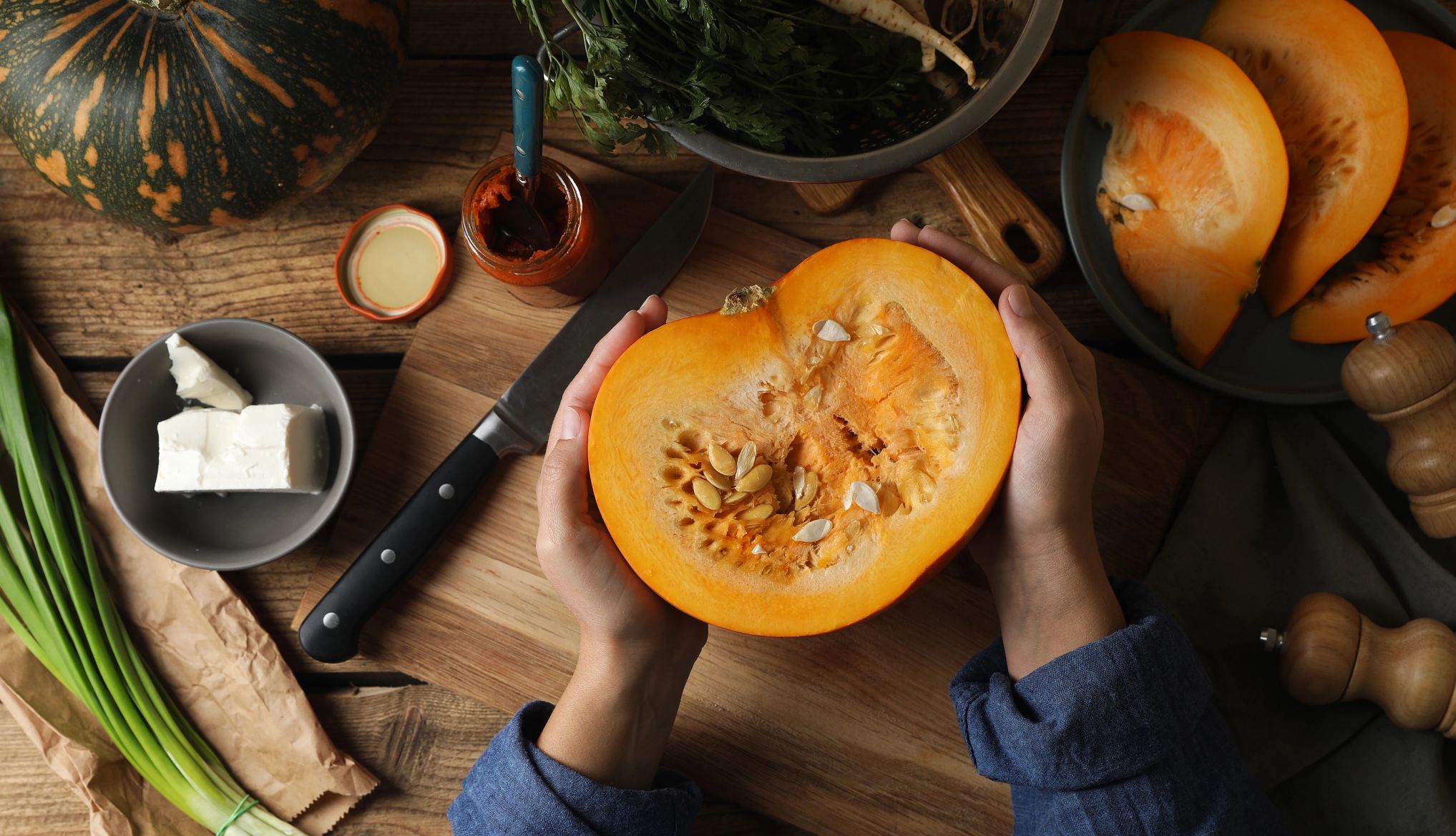AARP Hearing Center


For many people, fall is synonymous with pumpkin spice lattes, pumpkin bread and pumpkin pie. Although these treats are fine in moderation, they shouldn’t be mainstays of your diet. The problem is hardly the pumpkin itself, though; it’s the oodles of sugar and fat that tend to accompany such seasonal favorites.
“Pumpkin has an impressive nutrient profile,” says Amy Kimberlain, a spokesperson for the Academy of Nutrition and Dietetics. “One cup of cooked pumpkin has 49 calories, virtually no fat, 2 grams of protein and 3 grams of fiber,” and it’s loaded with beta-carotene, an antioxidant that gets partially converted into vitamin A in your body.
Here are 10 facts about pumpkins that might surprise you, as well as tips for enjoying it in a healthier manner.
1. They may help keep your immune system strong.
Steering clear of sick people, practicing good hand hygiene and staying up to date on your flu, COVID-19 and pneumonia vaccines are still crucial. But if you’re looking to give your immune system a little extra boost this fall and winter, eating an ample variety of produce — including pumpkin and pumpkin seeds — may help, Kimberlain says.
Pumpkin packs a wallop of vitamins and minerals, including several that may help get you through cold and flu season relatively unscathed. Vitamin A, for instance, may strengthen the immune system and help fight infections, Kimberlain says. Pumpkin also contains vitamin C, which increases production of white blood cells, helps immune cells work more effectively and makes wounds heal faster, she adds. And pumpkin seeds offer myriad minerals that support the immune system, including zinc.
2. They may help keep your vision sharp.
In addition to beta-carotene, pumpkin provides lutein and zeaxanthin, powerful antioxidants that have been linked to better vision, says Lyssie Lakatos, a nutritionist, personal trainer and coauthor of The Nutrition Twins’ Veggie Cure. “Lutein has been shown to prevent macular degeneration, the leading cause of blindness in the U.S.” (for those 65 and older, according to the Centers for Disease Control and Prevention), she says. “Studies also show that high levels of both lutein and zeaxanthin protect the eyes from harmful UV light.”
3. They are good for your heart.
Pumpkin is a good source of potassium, which helps moderate blood pressure by counteracting the impact of sodium, as well as fiber, which lowers blood cholesterol. It also contains arginine, an amino acid your body needs to make nitric oxide, “which is critical for blood vessel relaxation and blood pressure reduction,” Lakatos says. Pumpkin contains an array of antioxidants that may prevent LDL cholesterol (the “lousy” kind) from oxidizing. “When LDL cholesterol particles oxidize, this can restrict our blood vessels, ultimately increasing our risk for heart disease,” Kimberlain explains.



































































More From AARP
Are Seed Oils Really Bad for Your Health?
Experts say seed oils are healthier than social media claims. Here’s what the science shows
What Type of Sugar Is Healthiest?
Each sugar and sweetener has its own use and effects on the body
Could This Mineral Be the Answer to Insomnia?
Magnesium is a potential remedy for sleepless nights